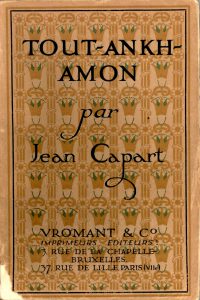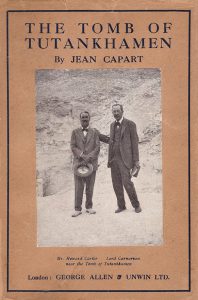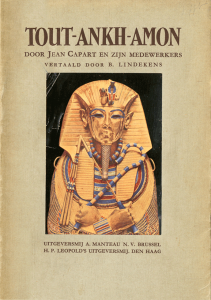Original french version of the book.
Tout-Ankh-Amon par Jean Capart (Bruxelles, Éditions Vromant & C°, 1923, 121 pp.).
Jean Capart, The Tomb of Tutankhamen. Translated from the french by Warren R. Dawson (London, Allen & Unwin Ltd, 1923).
In this “little book of impressions,” as he himself defines it, Jean Capart describes the famous tomb of which he had the privilege to visit it as one of the first in February–March 1923, before its treasures were carried off. Although Capart escaped the “curse of Tutankhamun,” which would allegedly befall all those who violated the tomb, he did not escape the wrath of his British colleague Howard Carter (1874–1939), who blamed him for disregarding his rights as the discoverer. An international bestseller, The Tomb of Tutankhamen was repeatedly re-released in different languages (French, English, Dutch, Danish . . . ).


